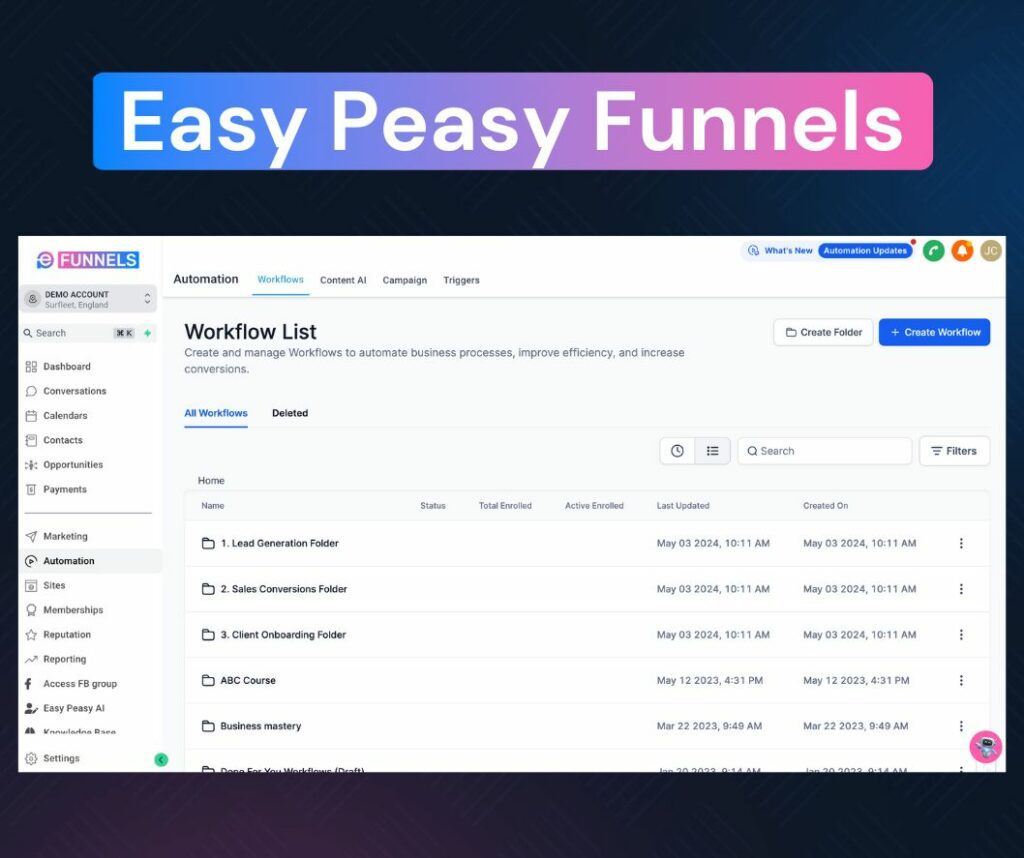Automating your business processes can save you time, reduce errors, and help you focus on more important tasks. But where do you start? This blog will walk you through the best practices for business process automation, offering tips and key steps for successful business automation.
By the end, you’ll have a clear understanding of the best way to automate your business process and why it’s crucial for your success.
Why automate? Business process automation is undeniably cost-effective and offers numerous advantages for businesses. That’s why 50% of business leaders intend to automate more repetitive tasks within their organisations.
If you’re keen to begin automating your business processes, continue reading to discover how business process automation can benefit you.

6 Best Practices for automating business processes
1. Identify Repetitive Tasks
The first step in automating your business is to pinpoint the tasks that are repetitive and time-consuming. These are often tasks that require minimal decision-making and follow a predictable pattern, such as data entry, invoice processing, or customer follow-ups.
Right! Automating these tasks can significantly boost your efficiency. Common business process automation examples include setting up email responses, workflow automation, automating social media posts, and managing inventory updates.
2. Set Clear Goals
Are you looking to reduce processing time, minimize human errors, or enhance customer service? Setting clear objectives will guide you in choosing the right tools and help measure the success of your automation efforts. By doing so, you’ll ensure that your automation aligns with your business goals and delivers tangible benefits.
3. Start Small
Start with a single process or a small set of tasks to automate. This allows you to test and refine your automation strategy before expanding it. Starting small helps you manage potential issues effectively and makes it easier to get buy-in from your team. As you gain confidence and experience, you can gradually automate more complex processes.
4. Involve Your Team
Your team plays a crucial role in the success of automation. Involve them early in the process to gather insights into which tasks can be automated and how. Additionally, training on new tools and processes should be provided to ensure they are comfortable and capable of using them. Their feedback can help fine-tune the automation and enhance its effectiveness.
5. Monitor and Adjust
Automation is not a set-it-and-forget-it solution. Regularly monitor the performance of automated processes to ensure they are delivering the expected outcomes. Be prepared to make adjustments as needed.
This step may involve fine-tuning workflows, updating tools, or re-evaluating the processes to adapt to changes in your business environment.
6. Develop Standard Operating Procedures (SOPs)
SOPs offer step-by-step guides for tasks, ensuring consistent methods across the organization. This consistency is vital for effective automation, as SOPs define what needs automation.
Large organizations rely on SOPs to handle employee turnover and maintain quality across teams. Smaller businesses might initially overlook SOPs but will face inefficiencies as they grow without clear procedures. SOPs prevent these issues by providing a reliable framework for new employees and making task automation easier.
They convert undocumented knowledge into structured procedures, which is essential for successful automation.

What is the right tool for Business Process Automation?
Your automation tools should integrate well with your existing systems and be easy to use. Popular options include workflow automation software, CRM systems, and project management tools.
When evaluating tools, consider their ability to handle your specific processes, ease of use, and integration capabilities. For example, tools like Zapier, Asana, and Microsoft Power Automate can automate various workflows seamlessly.
One tool that stands out for its comprehensive capabilities is Easy Peasy Funnels. This platform offers a range of features, including CRM, integration, website and funnel builder, email marketing automation, appointment scheduling, and workflow automation, all in one place.
Moreover, it integrates seamlessly with your existing systems and is designed to be user-friendly, making it an ideal choice for automating various business processes effectively.
Furthermore, Easy Peasy Funnels provides strong support and frequent updates, ensuring continued compatibility and efficiency as your business evolves.

Why Business Process Automation is Important
88% of small business owners say automation allows their company to compete with larger companies.
Business process automation is vital for modern businesses aiming to stay competitive. By automating routine tasks, you can save valuable time and reduce the likelihood of errors.
Automation allows you to focus on strategic activities that drive growth, such as innovation and customer engagement.
It also improves consistency and accuracy, leading to enhanced customer satisfaction. In a world where efficiency and accuracy are key, automation provides a significant advantage.
4 phases of Business Process Automation (BPA)
Phase 1: Planning and Analysis
It involves a comprehensive evaluation of the processes suitable for automation. Organisations start by meticulously mapping existing workflows to identify each step, decision point, and any bottlenecks. This process mapping helps understand the current state of operations.
Simultaneously, requirements are gathered to outline what the automated process should accomplish, including specific performance metrics and expected outcomes.
A feasibility study is then conducted to assess the technical and financial viability of automating these processes. This analysis ensures that the selected processes for automation are both necessary and practical, setting a clear foundation for the subsequent phases.
Phase 2: Design and Development
The focus shifts to creating a detailed plan for the automation solution. This involves outlining the system’s architecture, data flow, and integration points with existing processes.
During this phase, organisations select the appropriate tools or platforms that best fit the identified requirements.
The development of a prototype or proof-of-concept is often undertaken to validate the design and gather initial feedback.
This design phase ensures that the automation system is well-structured and aligned with the intended goals, laying out a clear path for the actual development.
Phase 3: Implementation and Testing
This phase is where the automated solution is built, integrated, and thoroughly tested. During development, coding and configuring the solution according to the design specifications is crucial. Integration ensures that the new automation system works seamlessly with existing systems and databases.
Comprehensive testing, including unit, system, and user acceptance testing, is conducted to identify and resolve any issues.
Phase 4: Monitoring and Optimisation
The focus is on ensuring the ongoing effectiveness of the automated processes. Continuous monitoring tracks performance to ensure that the automated processes are meeting the set objectives.
This is accompanied by regular evaluations, where performance data is analysed to assess the impact of automation on efficiency, accuracy, and cost.
Based on these evaluations, iterative improvements are made to enhance performance, address any emerging issues, and incorporate new requirements or adjustments due to changes in the business environment.
Conclusion
Automating your business processes is one of the most effective ways to enhance efficiency and boost profitability. By following these best practices to automate your business process you can successfully navigate the complexities of automation, streamline your operations, and free up time for more critical tasks.
Remember, the right tools and a well-defined strategy are key to successful automation. Start small, involve your team, and continuously monitor and adjust your processes. Embrace automation to simplify your business operations, improve productivity, and ultimately earn more.


